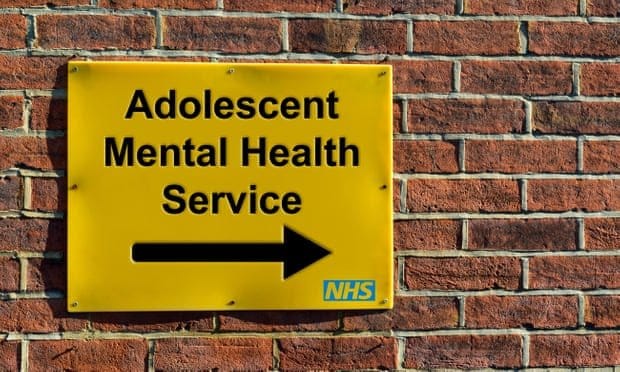
Youth Turning to Apps for Mental Health Needs.
According to the Office for National Statistics (ONS), in 2014, a total of 6,122 suicides were recorded in the UK for people aged 10 and older (10.8 deaths per 100,000 population), with suicide being the leading cause of death among young people aged 20-34 years of age. This equates to approximately one death every two hours, with around 75% of these being male.
Suicide is not a mental illness in itself, but rather a desperate attempt to control the overwhelming symptoms of the underlying mental health disease; making it the ultimate consequence for many mental illnesses. The Adult Psychiatric Morbidity Survey found that young people aged 16–24 were more likely to report suicidal thoughts than any other age group, with females in this age group having the highest levels of suicidal thoughts than any other demographic.
It is easy to rattle off a long list of statistics to prove a point, but there is a greater issue involved here, 72% of people who died from suicide between 2002 and 2012 had not contacted their GP or a healthcare professional about these feelings in the year leading up to the event.
There are a multitude of reasons to why patients are not reaching out for help. Severe depression and anxiety can make simple tasks such as going outside or calling your doctor too difficult. Simple everyday processes become a barrier to accessing help. It may be difficult to get access to a GP or a Doctor they trust, they may lack faith in the system to help them or are poorly informed about the help available, and the general stigma associated with mental health.
Although society and the media is trying very hard to change perceptions of mental health and the stigma associated with it, it remains a part of the problem. Stigma comes from multiple fronts. There is the social stigma inherent in a society, which can be localised due to the demographic disparity. Then there is a self-imposed stigma from the perception of the sufferer, at the possibility of being labelled as perhaps self-absorbed, their symptoms self-inflicted or unimportant. Either way, the fact that stigma exists around mental health compounds the suffering. Sufferers may feel it is a personal weakness or failure on their part, but the reality is that it is a disease that needs treatment and is ultimately not their fault.
If stigma, isolation and lack of availability of help compound the issue, the converse must also be true. People who receive support from caring friends and family, and who have access to mental health services are less likely to act on their impulses, however those impulses manifest.
According to the Care Quality Commission, evidence suggests that the number of children visiting A&E for mental health treatment has more than doubled since 2010. Many services are even failing to meet NHS guidelines for an out-of-hours crisis service.
Dr Nick Waggett, Chief Executive of the Association of Child Psychotherapists commented on the current state of the sector – “We do hear stories of children and young people having to have attempted suicide on a number of occasions actually before they are seen within the service… The problem is that then they’re very ill and it actually becomes increasingly difficult to offer them an effective treatment.”

I started this article to break the ice, stating the worst case scenario, but these points are just facts. Just as it is a fact that mental health is a continuum, the extremes are quite distinct, but the variations in between are gradual. If the number of fatalities represent one extreme, even though so prevalent, there will be so many more who are affected along the scale.
Everyone has mental health and just as everyone has different states of physical fitness, everyone has varying states of mental health. The two should not be thought of as separate since mental health plays a major role in your ability to maintain good physical health. Mental illnesses, such as depression and anxiety for example, affect your ability to participate in healthy behaviors.
Clearly there is a need for mental well-being to have the same prominence as physical well-being. Not to compare mental health disease with physical disease, but to appreciate that they coincide. Clinical depression is an illness that should be treated by a health care professional or a mental health professional, in as much as diabetes, arthritis or hypertension needs treatment.
Since the openness and access to sources of care and support can mitigate the risks associated with mental health issues, especially the prevalence at which these issues affect the young, we should publicise any available resources.
Tom Madders, Director of Communications, Campaigns and Participation at Young Minds, an organisation dedicated to tackling the issues around mental health in youth states- “Most young people spend much of their time online, and it can feel easier for them to communicate through messaging and online services than face-to-face”, this is where services such as Kooth come in. Kooth is a platform which offers online counselling and emotional well-being support for children and young people through a community of peers and a team of experienced counsellors.
It would seem that the use of health apps is an indispensable convenience and even preference which should be more widely adopted by local health organisations, including the greater health and social care system as a whole.
Many services are failing to meet the demands of those in need and the last thing which should happen if they have been able to reach out; is for young people to be rejected from a service they believed could help them. Whether there be a top-down, or bottom-up dissemination of these resources, it doesn’t matter, so long as access is made available. Anyone can download an app.
A helpful summary of available apps to support mental health well-being can be found here:
https://www.psycom.net/25-best-mental-health-apps
By Medicalchain’s Tim Robinson

